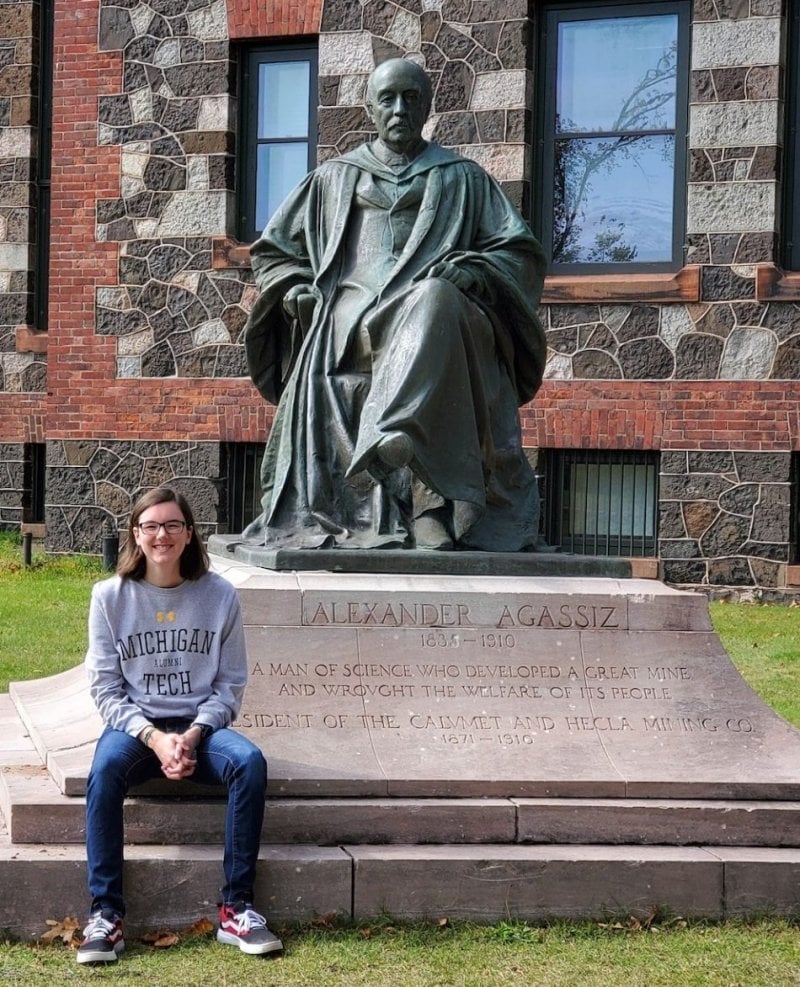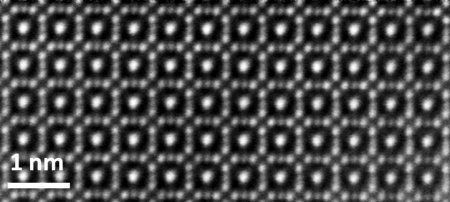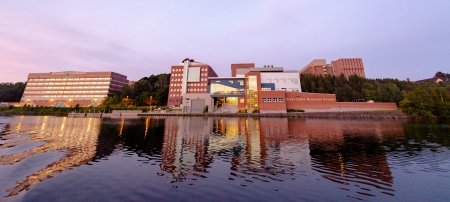Villa Savoye, Le Corbusier’s attempt to convey his architectural principles in one building, is a triumph of modernist architecture. It is renowned enough to have made the Lego Architecture series alongside the Sydney Opera House and Frank Lloyd Wright’s Falling Water.
Kate (Harkins) Hogberg conveys architectural principles in her job as Communications Specialist with HDR, Inc. She also is learning a fair amount about building blocks.
Kate, a Michigan Tech SBE graduate, is helping with Duplo instead of Lego sets at home—her child is two years old, and she and her husband are expecting another in June—but communicating about architecture, engineering, and construction is something she does every day.
"...It's important to balance work and fun, and finding a company and position that value that as well is critical."
“My typical day consists of communicating with engineers and scientists to tell stories of successful projects around the world,” says Kate. She leads the production, writing, and editing of internal and external publications, as well as developing the storylines, content, and production for internal and external videos. “Communication happens by email, phone, text, video conference, and in-person, and usually involves me asking a lot of questions to get to the bigger meaning of our work. The technical minds get focused on the technical aspects of their work, and it’s my job to extract how that work was new and innovative, used the latest technology, and made an impact on a community.”
Kate’s work tells the story of science and technology in the world. “I do a lot of writing and editing, work that communicates internal messages and goals and tells the story of our work and its impact,” she says. “Reshaping technical information into straightforward marketing materials takes an ability to collaborate with engineers, something business students at Tech are comfortable taking on.”
“At Tech, the usual question was ‘What are you?’ What kind of engineer, in other words. That mentality has been a huge advantage for me in the business world.”
Looking back out that window to the mountains, Kate thinks of what her work means in the big picture. “Engineering and science are the foundation of our communities,” she says, gazing at the grid of structures and transportation all the way to the base of those mountains, the ones in the distance barely more than tiny building blocks. “The minds that drive the technical fields have the ability to make a huge difference in our futures. These people solve complex infrastructure challenges and develop scientific breakthroughs.”
Away from the office, Kate’s ability to plan and manage is just as important for leisure as it is for cranking out information on a building project. “Being able to manage your time well is huge,” she says. “I always know what’s coming so I can plan my days accordingly and still have time to spend enjoying the outdoors with my family.”
She pauses again, turning back from the window. “I think it’s important to balance work and fun, and finding a company and position that value that as well is critical.”
And what advice for students leaving school and heading into the working world? “It’s exciting to start a career when you graduate, and I think that’s the time to make a name for yourself.” She thinks back on her path from a biomedical engineering firm to a construction company, and now to her home in Denver and career with HDR. “Bring your fresh ideas, show your enthusiasm and put in the time it takes to be great at what you’re doing.”
Michigan Technological University is an R1 public research university founded in 1885 in Houghton, and is home to nearly 7,500 students from more than 60 countries around the world. Consistently ranked among the best universities in the country for return on investment, Michigan's flagship technological university offers more than 185 undergraduate and graduate degree programs in science and technology, engineering, computing, forestry, business, health professions, humanities, mathematics, social sciences, and the arts. The rural campus is situated just miles from Lake Superior in Michigan's Upper Peninsula, offering year-round opportunities for outdoor adventure.




